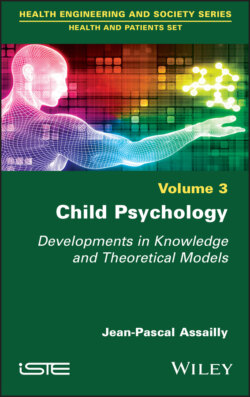Читать книгу Child Psychology - Jean-Pascal Assailly - Страница 43
1.7.2. Questioning the existence of adolescence
ОглавлениеThe concepts used to categorize individuals between the ages of 10 and 30 (such as “pre-adolescent”, “post-adolescent”, “adolescent”, “Tanguy4”, “early adolescence” and “late adolescence”) have little scientific validity; this led René Zazzo to his provocative formulas: “childhood and adolescence do not exist”.
Indeed, a dual variability is highly characteristic of the second decade of life and casts considerable doubts over the validity of categorizations:
– a strong “interindividual” variability: subjects at the same age are very different from one another (girls are two years more advanced than boys in terms of maturation and, within the same sex, boys with very early puberty or very late puberty can be very different);
– a strong “intraindividual” variability: at this period of life, the individual can change rapidly and strongly.
On the other hand, one phenomenon will affect all young people in France the extension and precariousness of youth, as shown by the statistical data in Table 1.1.
Table 1.1. Average age at end of education in France
| Year | 1930 | 1970 | 1990 |
| Age | 15.8 | 20.3 | 21.5 |
This extension, which is desirable, is sometimes even decided politically, when a minister declares that 80% of an age group must obtain their baccalaureate. The price to be paid is the prolongation of dependence on parents. Thus, 72% of 18–24 year-olds live with their parents (EU average).
Another consequence is the delay of parenthood (see Table 1.2).
Another negative consequence is that many people enter the world of work in a precarious way; previously, it was done in a way of integration, but today, it is more a question of experimentation (the archetype of the trainee).
Table 1.2. Average age of mothers at first child in France
| Year | 1974 | 2019 |
| Age | 24 | 29 |
As a result, unemployment is twice as high among young people (23% compared with 10% for the general population) and 20% of young French people live below the poverty line, a reality that the country does not dare to face.
Experimentation is therefore what specifically characterizes this period of life: experimentation with work, roles, psychoactive products and so on.
Still, within this cohort, the university dropout rate is massive: 30% in the first year.
Another contemporary phenomenon strongly influences adolescence today: the rise of “individualism”, the disappearance of traditional solidarities and therefore the autonomization of identity constructs and “intergenerational transmissions deficit”. The loss of influences such as family, religion and communism will disturb identity construction, a fundamental developmental task of adolescence, hence the “uncertain individual”.
